Today was my first day helping the divers. Employees at McMurdo can get the "okay” from their supervisors to take a day or part of a day to help scientists. It is great for the employees to see some of the science that goes on here, and great for the scientists to interact with people from all over who have come to Antarctica to work. All of the employees here – no matter what they are doing – are absolutely essential to the scientists being able to do science.
Saluay was a dive tender with me today. She works in housekeeping.
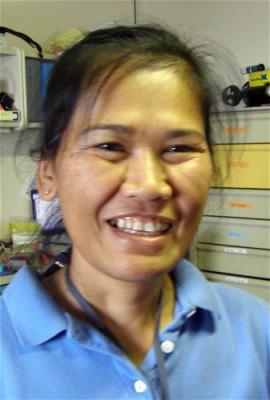
Saluay is our first dive tender
Stacy and Marcus dove with Rob Robbins, the Diving Safety Officer at McMurdo Station. While the divers suited up, Salauy and I tried to load their 60 lb. dive tanks and 40 lb. dive belts into the Pisten Bully. It took two of us to carry the gear because it was so heavy.
Then we drove the Pisten Bully down to the jetty where there is a dive hut. The dive hut is basically a wooden hut with double-entry doors at each end, a heater on one side, and a dive hole on the other. We had to chip at the ice in the ice hole and then used a fish net to scoop out the chunks.
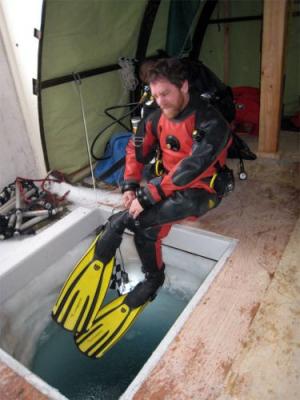
Rob sitting at the edge of the dive hole.
One of the dive tender jobs is to make sure that masks are on smoothly so they don’t leak and that all the places where the dry suit parts connect (like the hoods and the gloves to the main body) are completely sealed so no water can get inside.
Then we watched their bubbles as they disappeared down the hole. We took turns watching for bubbles in the hole and shoveling out the snow-packed hut entrances. When the divers resurfaced (one at a time) we helped them take off their tank and weight belt and fins so they could climb the ladder out of the hole.
When we got back to the lab, Stacy prepared her samples for sorting at a later time. She had to carefully open each of the six sample corers she had placed in the seafloor sediment at (82 foot depth) and sift the silty sediment out so she could recover the benthic (seafloor) invertebrates.
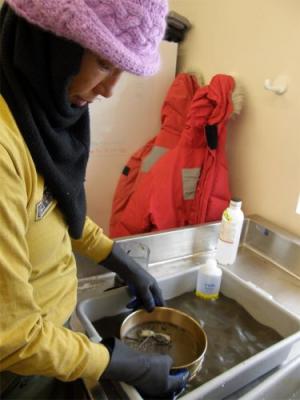
Stacy sifting her samples in the lab
Stacy got some tiny clams and tube worms and maybe some very tiny anemones. The anemones might only be 300 microns long (that is less than 1/3 of a millimeter!). Stacy has been sampling the same locations for 20 years so she can see what changes have been occurring on the seafloor. She will need some students in the future to help her sort and analyze all these invertebrates – so if this looks fun to you – keep her in mind!
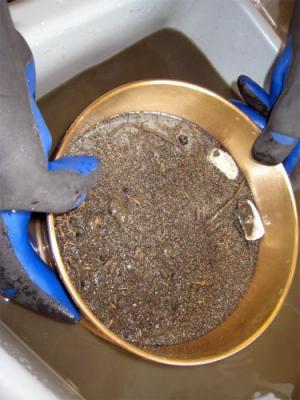
Sieve sample (Photo by Marcus Kolb)
Do you see the clams by Stacy's upper thumb? These clams are like miniature geoducks for those of you who are familiar with those clams that cannot get their siphons into their shell.
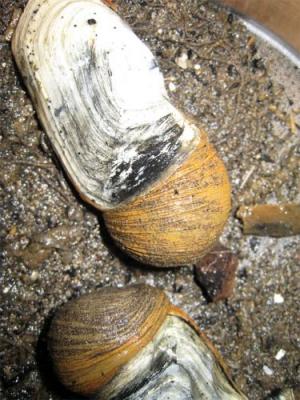
*Laternula *spp. (Photo by Marcus Kolb)

